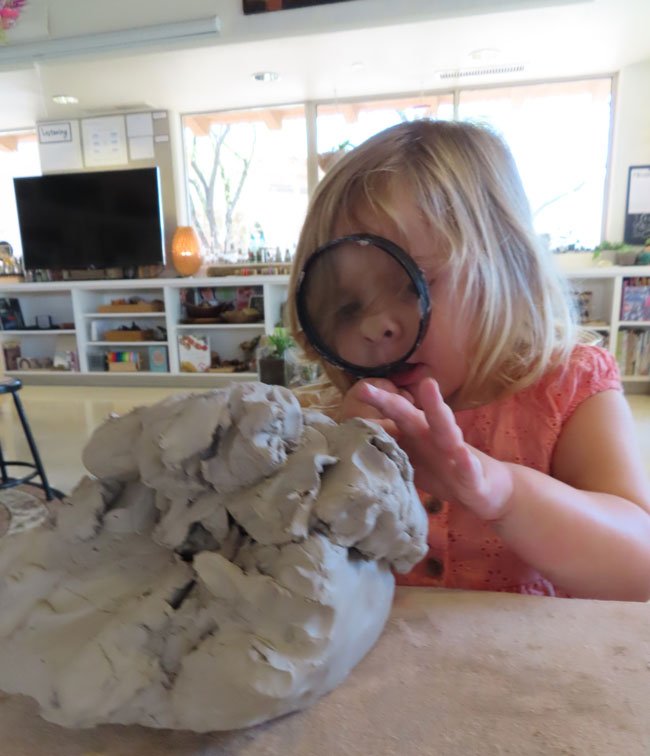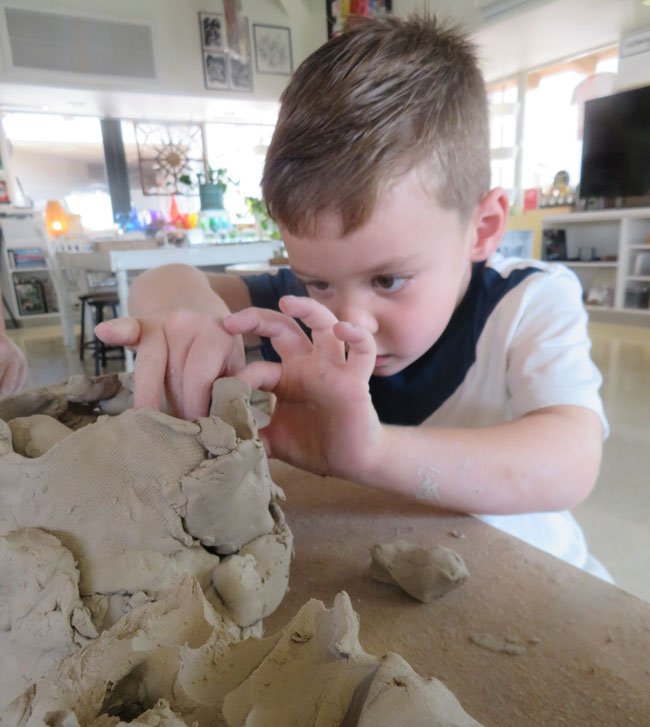Clay is a staple in each of our classrooms, as well as the Atelier. There are numerous benefits to children working with clay. The greatest learning in clay is found in the process, rather than the product. Asking children “What are you making?” often takes them out of their exploration mindset and sets the expectation for something to be created instead. Encourage children to investigate, and experiment with wonder-based questions, such as:
● What do you notice about the clay?
● I wonder how it feels…
● What happens when you add water?
● What do you feel? Smell? Hear?
As a natural material, the earthy properties engage all the senses, reinforcing the learning process. Children learn through clay in many ways. While touching and exploring the tactile elements of clay, children often use their fingers and hands to squeeze and pinch the clay. As they experiment with the texture and malleability they are also developing their fine motor and spatial awareness skills.
Piling clay into different shapes and sizes allows children an opportunity to experiment with balance and stability. Pounding clay with hands or tools supports gross motor development and also often creates an imprint in the clay, another form of manipulation. Clay tools and utensils can also be added to encourage cutting clay, introducing shapes and patterns, as well as the principles of division and subtraction. Rollers allow children another way to manipulate the clay through pressure and control.
Working with clay develop’s children fine motor skills, hand-eye coordination, and spatial awareness. It sets a foundation for later academic skills, such as handwriting and mathematics. Its open-ended nature encourages storytelling, developing language, communication skills, and cognitive development. By engaging all of the senses, children are more likely to make long-lasting connections between inquiry and learning and to stay focused and engaged in their work for longer periods of time. An easy way to introduce clay at home is to pick up some burlap from a fabric store for easy clean-up!
This blog post highlights Community Playthings article on the benefits of play. Read the full article here to learn more.












